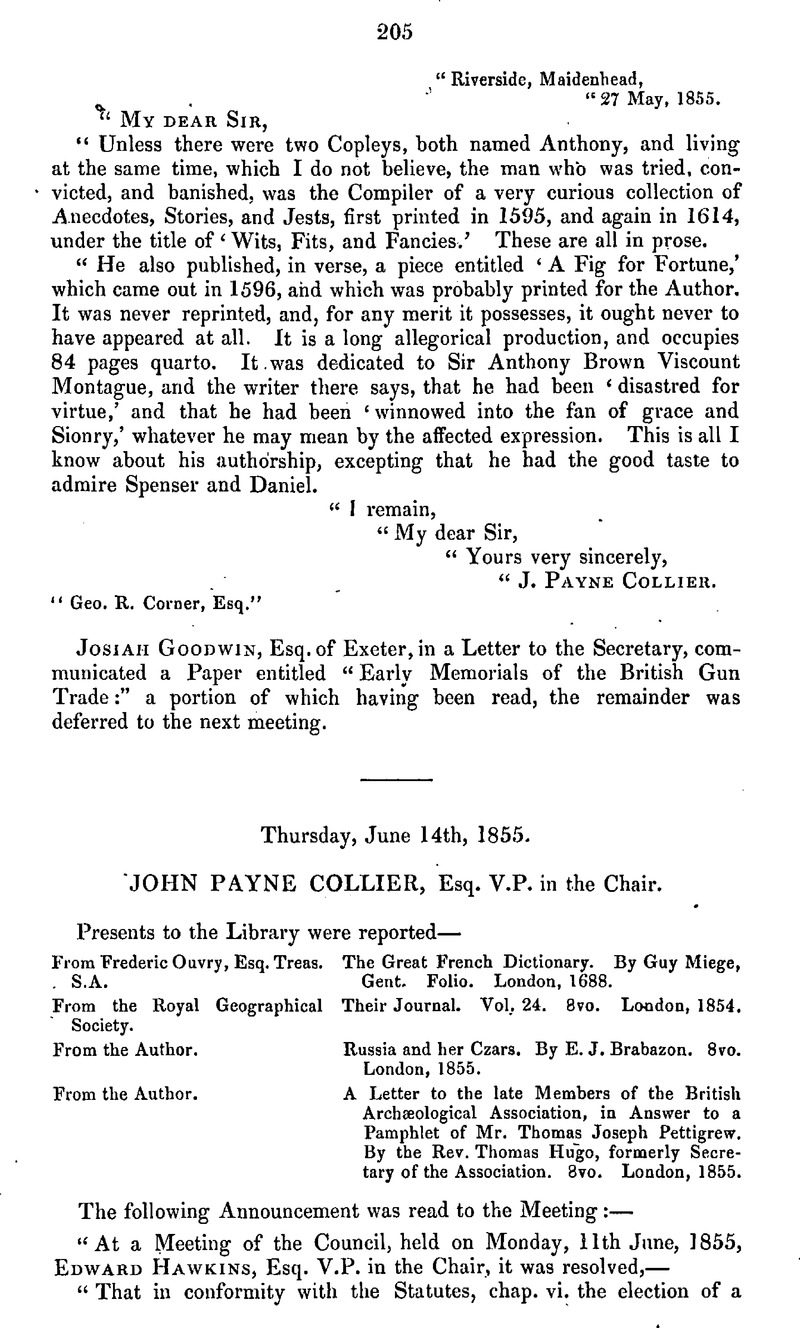No CrossRef data available.
Article contents
Thursday, June 14th, 1855
Published online by Cambridge University Press: 10 May 2010
Abstract

- Type
- Proceedings
- Information
- Copyright
- Copyright © The Society of Antiquaries of London 1856
References
page 207 note * Rationale Div. Officiorum, lib. vii. c. 38.
page 207 note † Idem.
page 207 note ‡ Licquet, Hist, de Norm. torn. i. p. 149. Fallue, Hist, de la Ville et de l'Abbaye de Fécamp, p. 86.
page 208 note * “Sepultus est in stillicidio ecclesiæ quod vivens humiliter et instanter postulaverat.”—Gall. Christ, tom. x. p. 872.
page 208 note † Was it not rather to be considered an act of humility and self-abasement? Such a reason at least we find ascribed by Roger of Wendover, and also Matthew of Westminster, to St. Swithin's similar desire to be interred “exposed to the feet of the passers-by, and to the dropping of the eaves from above.”—W. M. W.
page 208 note ‡ Liber Leg. Salicæ, tit. 17.
page 208 note § Div. Off. Explicatio, cap. clix.
page 208 note ‖ Rationale, lib. vii.
page 210 note * Johannes Scotus. Vide Will. of Malmsbury.




